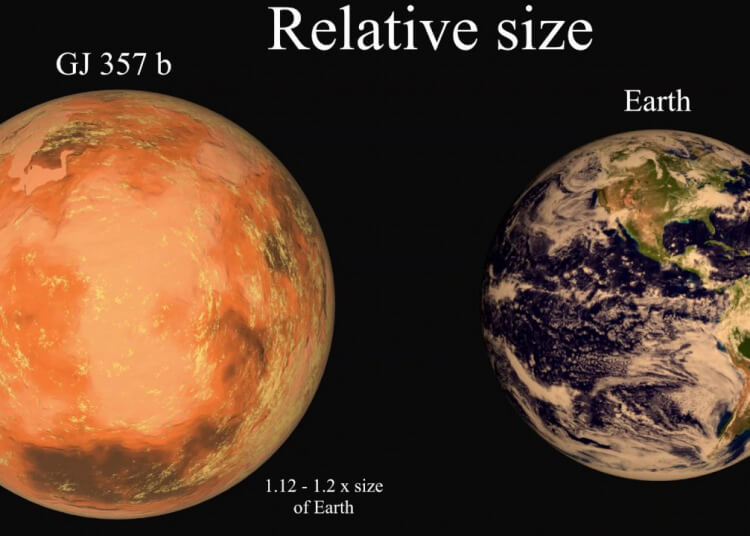
You think it is the earth? No, you‘re wrong, that is GJ 357 d,
An international group of astronomers discovered the planet using NASA’s Transiting Exoplanet Survey Satellite (TESS) earlier this year in the constellation Hydra, about 31 light-years from Earth, according to a statement by NASA. (One light-year is the distance light travels in a year, about 6 trillion miles, or 10 trillion kilometers.)
The exoplanet, named GJ 357 d, is believed to be around twice the size of Earth and harbor six times Earth’s mass. Located in the outer edge of its host star’s “habitable zone,” scientists believe that this super-Earth could have water on its surface.
“If the planet has a dense atmosphere, which will take future studies to determine, it could trap enough heat to warm the planet and allow liquid water on its surface,” Diana Kossakowski, a researcher at the Max Planck Institute for Astronomy in Heidelberg, Germany, and co-author of the recent study, said in the statement.
The potentially habitable planet and two neighboring worlds were found orbiting around a dwarf star, around a third the size and mass of our own sun and 40% cooler. TESS noticed that the light coming from this small star dims slightly every 3.9 days — a clue that an exoplanet may be transiting its face.

That world is GJ 357 b, a “hot Earth” that orbits 11 times closer to its host star than Mercury does to the sun and likely has a surface temperature of around 490 degrees Fahrenheit (254 degrees Celsius).
But GJ 357 b’s possibly habitable neighbor planet soon stole the show. Further observations showed that GJ 357 d orbits its star every 55.7 days at a distance of around a fifth of Earth’s distance from the sun, and could have Earth-like conditions, according to a statement from Cornell University.
“We built the first models of what this new world could be like,” Jack Madden, a doctoral candidate at Cornell and co-author of the study, said in the statement. “Just knowing that liquid water can exist on the surface of this planet motivates scientists to find ways of detecting signs of life.”
The other planet in the system, GJ 357 c, is at least 3.4 times more massive than Earth and orbits the star every 9.1 days. GJ 357 c probably has a surface temperature around 260 Fahrenheit (127 C), NASA officials said.
The team hopes to soon be able to look for signs of life on the exoplanet with future telescopes.
Please remember we all have different opinions, Think Before You Speak or Write Something that is cruel to Others. After all, We are only Humans. Wishing you clear skies and wide eyes. To share your experiences or just leave a comment there is a area below. Read or listen.
We are the change the world has been waiting for!
Have you witnessed an unidentified flying object?
You are not alone. Whether you think UFOs are black projects, extraterrestrial craft, something else altogether, or just don’t know, again, you are not alone!
Unconditional love. The road we all get to walk. Unconditional love is like the sun.
WE ARE THE DISCLOSURE !~ WE HAVE NEVER BEEN ALONE
Love and Regards,
Thank You,
Nancy Thames
Source Violet S.



Hello! I must say I’am not surprised by these discoveries and we could go to these worlds and create life there not only that but human life in are likeness.Just as it was done on Earth with the arrival of the Elohim scientists.a long time ago.Let’s keep up the search and the pace for these worlds more exciting discoveries await us there! We may even discover the Elohim’s planet not to mention the eternal life planet along the way wouldn’t that be something!